An original premise that stems from the idea of “what if” and the famed La Brea Tar Pits, TAR hypothesizes via an entre of Native American lore, what if something has survived in the tar or under the tar for the past 40,000 or more years and is now rearing its sticky self amid all of the underground construction on Wilshire Boulevard? It’s an interesting idea and probably something that many kids and even adults have wondered every time they visit the tar pits or walk by and see the mammoths rising out of the still bubbling tar. With that idea as a starting point, writer/director Aaron Wolf together with co-writer Timothy Nuttall brings the story to life on the screen.
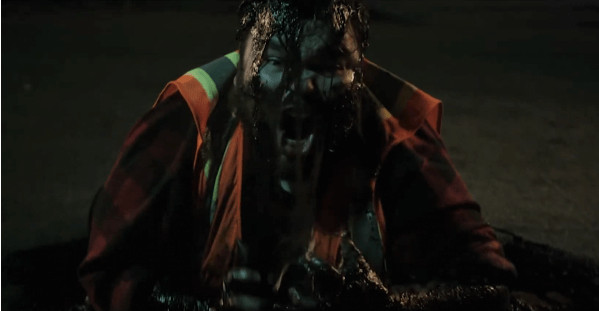
Spanning three generations of the Greenwood family, times they are a-changing. Their small family business which has been in the same Wilshire Boulevard location for decades is being demolished thanks to the City’s “progress” in extending the subway system. The Greenwoods have to leave and must be packed and gone no later than 6:30am. It’s moving day and the family patriarch, Barry, is more than melancholy, steeped in nostalgia with every paper, every box, every staple he touches. His son Zach, seemingly always at odds with his father and with little interest in the family legacy, is pushing the packing along with a less than sympathetic ear. Adding to Zach’s frustration is the less than ambitious nature of the employees, all but one of whom probably couldn’t find a job anywhere else but for the generosity of Barry Greenwood.
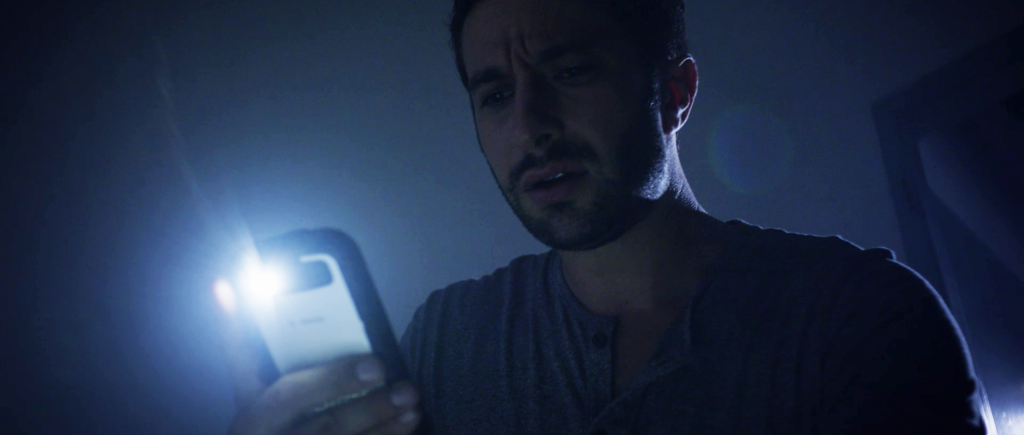
But as day turns into night, strange things start to happen. Noises and rumblings that are more localized, louder and stranger than an earthquake, put everyone on pins and needles. Fear starts to escalate when power is lost. Zach plays it off as nothing and continues to be a taskmaster with the packing; that is until strange things start happening, things that harken back to stories he was told as a young boy by his father and grandfather, stories of a creature that lives deep in the tar, only appearing when his slumber is disrupted by man and his “progress.”
There are several strong suits to TAR that bubble to the surface and keep your interest, most notably, the concept itself, the casting and performance of Graham Greene, the creation of the TAR creature, some nice sound design and mix, and the paced editing of the creature’s reveal. However, TAR does get stuck in some of the muck that weighs it down with a lack of clarity and intent.
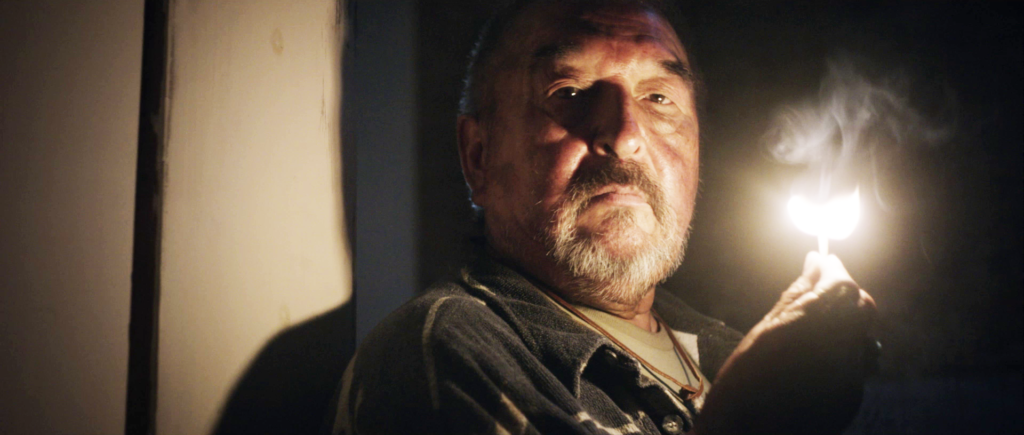
As mentioned above, the idea of a creature under the LA Brea Pits is not only within the realm of the imagination but allows for a story to go in many directions, one of which is that Wolf and Nuttall smartly take here, especially given the cinematic economy so necessary in a lo budget/no budget/micro-budget indie film, as provided by the ongoing subway construction along Wilshire Boulevard in front of the tar pits.
Building on that original concept is the introduction of Native American lore and the history of the tar pits, the importance of the Native American people in the region, and the tales of “Man of the Tar” as regaled by a homeless Native American sitting outside the La Brea Tar Pits, telling the tale to all who pass by and toss a few shekels into his cup. Serving in this narrative capacity is Graham Greene who is perfection. The authenticity that he brings in this role is not only essential to the film but elevates some of the more obvious indie production elements. And while Greene pops up several times throughout the film, you find yourself constantly hoping to see more of him, particularly given some of the other characters and performances we are witness to.

Timothy Bottoms easily tackles the role of family patriarch Barry Greenwood, combining a sense of wistfulness for days gone by as the family business is being destroyed, and the idea of protecting his family when the Man of the Tar rears its ugly sticky head. Stuart Stone provides much needed comic relief as realtor Sebastian, so anxious to have the Greenwood business gone so he can do a quick turnaround for high rent before eminent domain kicks in and the City demolition teams arrive. But then things go south with characters and performance with the exception of Dani Fernandez as paper-pushing employee, Carmenia.
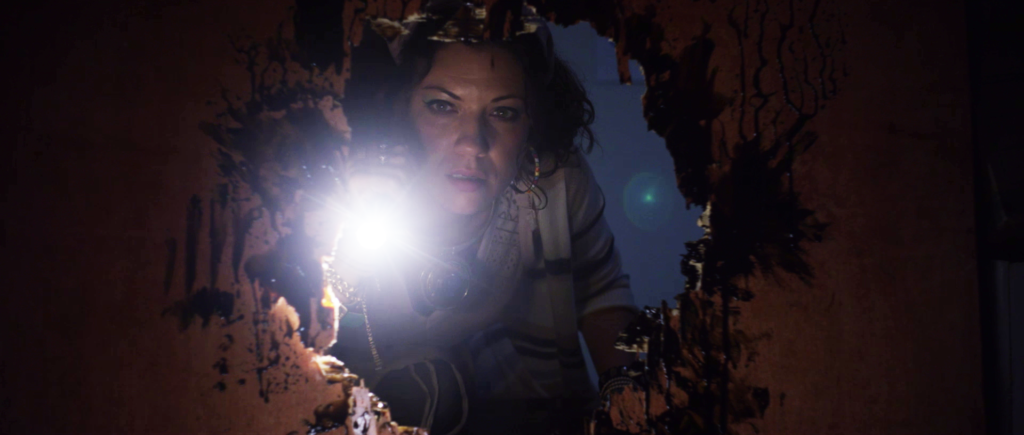
As the beyond buffoonish Ben, with lines like “the building burped” and inappropriate sexual comments to his female coworkers and demands to be kissed, Sandy Danto proves an annoyance and has one wondering if this is supposed to be a “knowing” wink-wink comedy of sorts. This is a family-owned business and someone like Barry Greenwood would never allow a character like Ben on the premises. This is one of the times in a true horror film where you are hoping maiming and death come quickly for a character, basically to put you as the viewer out of your misery. Add to Danto’s take on Ben, Emily Peachey as Zach’s significant other, Nicole Alexandra Shipley as the buxom blouse-buttoned-down-to-there Diana, Tiffany Shepis (who I normally like to see in a film no matter how small the role) as self-perceived psychic Marigold, and Aaron Wolf as Zach Greenwood, adding a fourth hat as lead actor to his already heavy job duties as director, co-writer, and producer of TAR.

This is one of those times where an actor should either be an actor or step away and be a director/writer, but not do all at the same time. While I fully appreciate the need for economy in indie filmmaking, sometimes filmmakers need to bite the bullet for the sake of the film. Using insets of Wolf in character as Zach Greenwood with a stupefied look on his face regaling events of the night to someone, presumably the police, from beginning to end, detracts from the events of the night which really pick up more than halfway into the film. And even then, although his scenes opposite Timothy Bottoms and Graham Greene are resonant and strongly delivered, Wolf lacks a believability during this night of turmoil. I strongly believe that a different set of eyes could have strengthened Wolf’s performance and the film as a whole.
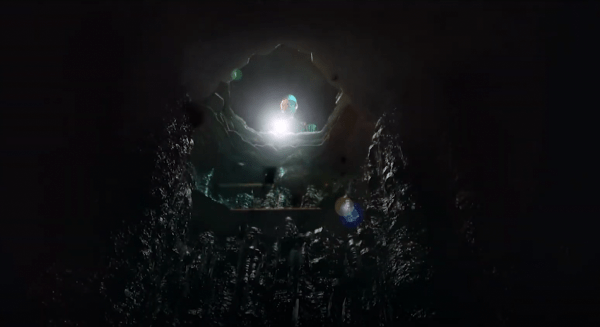
From a production standpoint, Wolf does a good directorial job once we get past the midpoint of the film. The first half of the film is lackluster with too much exposition and extraneous “stuff”, almost as if it was plugged in to fill time. When the action does pick up and tension rises by the third act, Wolf exhibits good instinct in working with his cinematographer Aashish Gandhi who does wonders with camera angles to vary the look of hallways and rooms giving a sense that the office is much larger than it is. And when we get to “tar on man” action, Wolf wisely lets Gandhi’s work and that of editor Simon Carmody take center stage with handheld camera work and some rapier editing that ups the fear factor exponentially. And kudos to the FX folks handling the tar itself; and yes, as with many of the effects in the film, it’s practical and not CGI. It looks terrific and terrifying in many instances. Standout are lightly sepia-toned flashback sequences to the days of Barry Greenwood as a child. Tieing the generational aspects of the story together, these flashbacks are shot handheld with dutched framing and tight close-ups that convey fear as well as giving us the POV of a child seeing not only the larger than life bravery of a parent but casting an indelible impression on him for the rest of his life, thus adding an emotional urgency and resonance to the film.
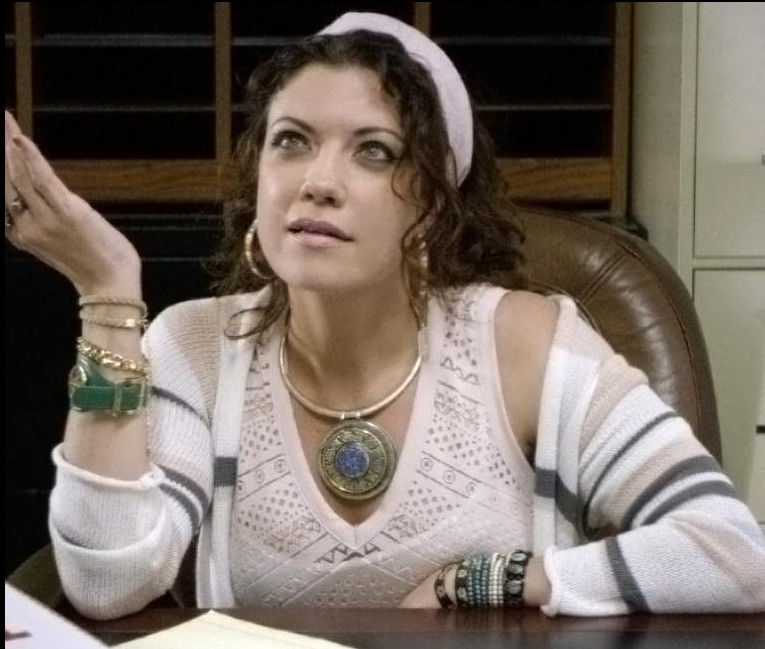
And speaking of Carmody’s editing, kudos to both he and Wolf on pacing the reveal of the Man of the Tar. Beautifully done. Much as Victor Salva did back in 2001 with Jeepers Creepers we are kept in the dark as to what is making noise, where are puddles and pools of tar coming from, showing us only a foot, a dripping tar cloak hem, staff or spear, a claw, teasing us until well into the third act as to what this creature is, what does it look like. Very well done with the paced reveal and once we see the creature, we are not disappointed in its look.
Most impressive is Conor Jones’ scoring and the use of drums and other Native American instrumentation which is then effectively mixed by the sound team with sounds of underground construction, earthquake-like building shakes, and the Man of Tar himself, the latter of which are quite fun and have a true creature-like inner growl as if from the bowels of the earth. Notable is the subtle use of Native American chanting which adds more texture and follows through on the opening narrative by Graham Greene and his character of a homeless man.

One of the biggest dilemmas with TAR, however, is that it gets mired down by not knowing what it is or who is the intended audience. Is it a horror film? Although there are a few bloody moments, it doesn’t feel like one. Is it psychological terror? It does play to that, but not sufficiently. Is it tongue-in-cheek, a “wink-wink” at itself? There are moments. Is it a family drama? There are those elements, as well. But nothing really stands out as defining which I fear will create an issue with marketing and with viewers. There needs to be more clarity as to the intended audience for the film, a clarity which can come through stronger more believable characters and a more substantive story in the first half of the film. And it’s a shame because there are some wonderful elements here that stick with you long after the film bubbles to an end; elements that I sincerely hope to see in a sequel.
Directed by Aaron Wolf
Written by Aaron Wolf and Timothy Nuttall
Cast: Timothy Bottoms, Graham Greene, Aaron Wolf, Sandy Danto, Dani Fernandez, Tiffany Shepis, Nicole Alexandra Shipley, Emily Peachy, Stuart Stone
By debbie elias, 10/15/2020












